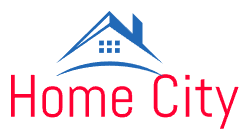Nestled within the bustling heartbeat of the city, a quiet revolution is unfolding – a redefinition of urban living that transcends the concrete structures and transforms neighborhoods into vibrant communities where familiarity and connection thrive. This is the essence of Community Living: Urban Neighborhoods that Feel Like Home. In the midst of the urban sprawl, where the pace of life can be relentless, these neighborhoods stand as beacons of belonging, weaving a tapestry of shared experiences, relationships, and a sense of unity that transcends the anonymity often associated with city living.
At the heart of community living is the idea that a neighborhood is not just a collection of residences but a living, breathing entity shaped by the people who inhabit it. Residents actively engage with their surroundings, transforming the mundane into the extraordinary. Streets become communal spaces, alive with the laughter of children playing, neighbors chatting on front stoops, and impromptu gatherings that turn routine into celebration. The once-faceless urban landscape transforms into a place where everyone knows each other, creating a genuine sense of belonging.
Shared spaces become the lifeblood of these communities, fostering interactions and fostering a collective spirit. Rooftop gardens offer a tranquil retreat, communal kitchens become spaces for shared meals and culinary collaborations, and co-working spaces provide avenues for professional collaboration. The intentional design of these shared spaces encourages spontaneous encounters, transforming neighbors into friends and creating an environment where people naturally connect.
In community living, the concept of the “third place” takes center stage. Beyond the home (the first place) and the workplace (the second place), residents seek out and contribute to communal spaces that serve as a third place – a social anchor that facilitates relationships, cultural exchange, and a sense of continuity. These spaces, whether cafes, local parks, or community centers, become the backdrop for the ebb and flow of daily life, knitting together the diverse threads of the neighborhood.
Architectural design plays a crucial role in shaping neighborhoods that feel like home. Thoughtful urban planning prioritizes walkability, creating pedestrian-friendly environments that encourage exploration and interaction. Mixed-use developments seamlessly blend residential, commercial, and recreational spaces, fostering an environment where daily needs and leisure activities coexist. Streets are designed with gathering spaces and greenery, contributing to a sense of serenity amidst the urban hustle.
Diversity is not just acknowledged but celebrated in community living. These neighborhoods become microcosms of society, reflecting a rich tapestry of cultures, backgrounds, and perspectives. Cultural festivals, community potlucks, and collaborative art projects become catalysts for understanding and connection, fostering a sense of unity that transcends differences. In this diversity, residents find strength, inspiration, and the opportunity to learn from one another.
Sustainability becomes a shared commitment in community living. Residents collectively strive towards eco-friendly practices, from community gardens and composting initiatives to energy-efficient infrastructure. The shared responsibility for the environment fosters a sense of stewardship, creating neighborhoods that are not only socially but also environmentally conscious.
The sense of safety and security is amplified in these close-knit communities. Neighborly watchfulness becomes a norm, with residents looking out for each other’s well-being. Whether through neighborhood patrols, shared emergency preparedness initiatives, or simply keeping an eye on one another’s homes, the residents collectively contribute to the overall safety of the community.
In the narrative of community living, the definition of “home” extends beyond the physical walls of a residence. It encompasses the shared spaces, the familiar faces, and the collective heartbeat of a neighborhood. The urban landscape, often seen as cold and indifferent, transforms into a canvas for connection, support, and a genuine sense of home. In Community Living: Urban Neighborhoods that Feel Like Home, residents don’t just live side by side; they live with and for each other, creating a narrative of urban living that is warm, inclusive, and distinctly human.


